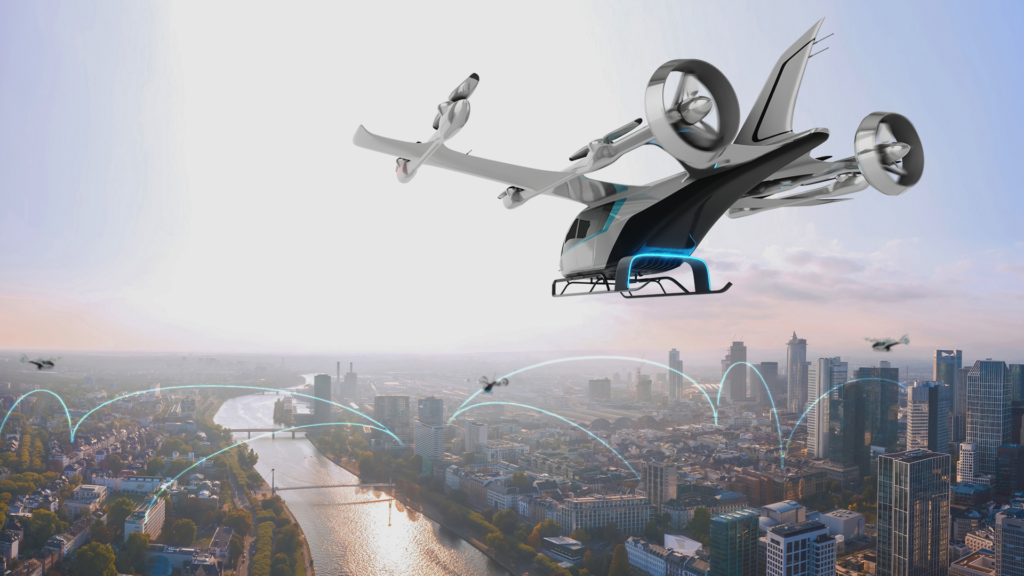
By Eduardo de Vasconcellos, CEO RPAS Ops Consulting and Member of the Board of Liaisons, Brazil, at the Advanced Air Mobility Institute
Aiming at officially informing industry, local stakeholders and the general public on the development of eVTOLs and advanced air mobility in Brazil, from a type certification perspective, ANAC, the Brazilian civil aviation authority, has for the first time publicly communicated its view and planned actions relative to aircraft airworthiness and certification in its ADVANCED AIR MOBILITY Panorama e Perspectivas publication.
The first part of the document provides a notional overview of the global AAM sector, its use cases, enabling technologies, and main challenges. Sources utilized herein are Roland Berger, Porsche Consulting, Morgan Stanley, Leeham News, McKinsey, Airbus, Embraer, and Lilium.
The balance of the document outlines the main current and future actions or activities of the Agency, associated with design certification, local and international coordination, and stakeholder communications – where the focus of this article shall be placed.
Design certification-related actions
ANAC finds itself in the ‘define certification database’ stage, along a typical roadmap from design certification through production, to ongoing operations. The following ongoing activities stand out.
- Type certification of EVE-100 aircraft, of EVE Air Mobility. Process is at the definition of the certification database stage. Request for validation, by FAA, of the type certification of the EVE-100 aircraft has been sent.
- Request for validation submitted to EASA of the type certification of Lilium´s eVTOL aircraft, to be certified by EASA. Monitoring discussions between EASA and FAA (Certification Oversight Board and eVTOL Task Force) on harmonization and convergence of requirements and means of compliance for type certification of eVTOL.
- As a future activity, monitoring AAM-related aircraft certifications in other countries, that may have a market potential in Brazil.
- Augmenting the interaction with the Agency´s other Superintendencies (SIA) – Aerodrome Infrastructure, (SPO) – Operational Standards, and (SPL) – Civil Aviation Personnel.
The main objective of AAM-related international coordination between the CAA and standard development authorities is attaining convergence, as achieving a common certification base. Some of the ongoing activities in this domain include discussions within the Certification Management Team – ANAC, FAA, EASA e TCCA — on the alignment of guidance for product certification and participation in the development of international industry standards, in committees that have or are proposing the inclusion of eVTOL in their respective scopes, such as ASTM F37, F39, F44 and F44-30; SAE E-40, G-35, G-34/EUROCAE WG-114, WG-112.
ANAC is also pursuing agreements or letters of intent with select foreign CAAs and participating in ICAO´s AAM-related study groups.
On a local and national level ANAC is pursuing potential coordination with federal, state or municipal governments in their preparation for UAM and AAM. Participation in local industry development organizations includes joint activities with DECEA (Airspace Control Department), in the development of Conops for AAM, and other aspects related to navigation, operations and air traffic.
Analysis
As with most regulatory agencies in Brazil, ANAC, albeit equipped with a team of capable and committed professionals, is a conservative, understaffed organization which works predominantly driven by external requests and stimuli. The document reveals the sheer size of the learning curve and the enormous challenge ahead, particularly in a novel, not yet stabilized international context.
It is worth noting that, at this point in time, besides informing on conversations with EVE and Lilium, and exchanges with FAA and EASA on validation, no technical information is provided on the certification path, applicable regs, or timetable.
The list of agencies and SDOs indicated also hints at the huge amount of energy, and trained resources, required to participate in or to monitor the work of eVTOL-related working groups or subcommittees at ICAO, FAA, EASA, CMT, ASTM, SAE, EUROCAE, DECEA and other local institutions.
One should also note that the responsibility for the vertiport/aerodrome infrastructure falls under a different regulatory authority – the SIA. The same applies to operating standards, under SPO, and pilot licensing, under SPL. The author of the document is the Superintendency of Airworthiness and Certification, SAC. Strong internal coordination will be key.
This means that a company like EVE, or a foreign eVTOL operator and manufacturer, wishing to operate AAM services in Brazil will have to obtain a series of certifications or authorizations from: ANAC, as indicated above, DECEA, for airspace access, ANATEL, if connectivity is involved, and a number of state and local authorities, on use of land, zoning restrictions, city codes, and the like. Not very different, in other words, from processes that we have seen in other countries developing AAM services.
But with this publication both the regulatory and the business environments have now been initially formatted and this should encourage stakeholders who consider Brazil a strategic, potentially profitable market.
(Image: EVE Air Mobility)


